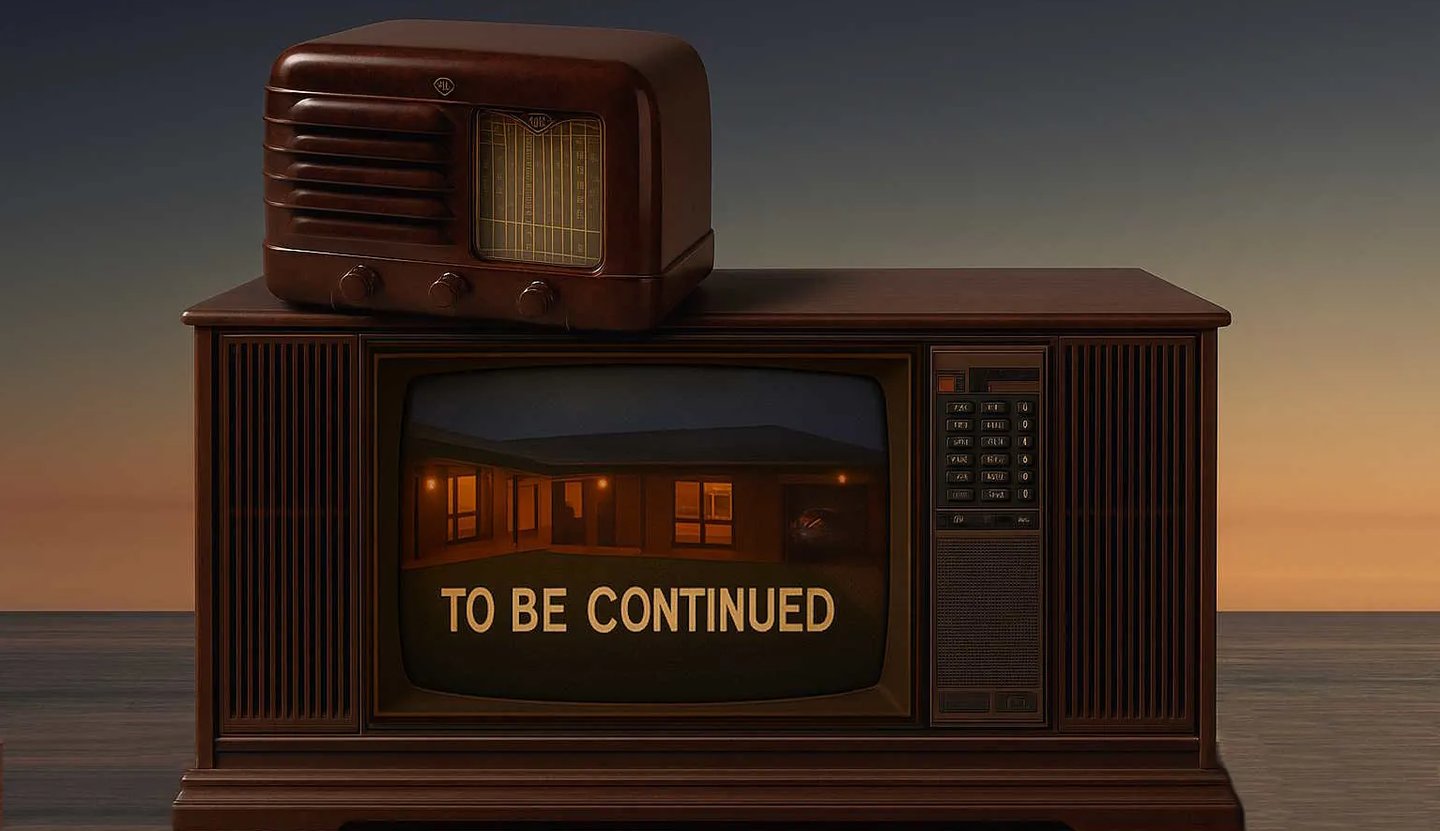
Authors Insights - Why Episodes, Not Chapters?



Why Episodes, Not Chapters?
If you’ve ever asked yourself why we call them episodes instead of chapters, it’s a fair question, one worth sitting with for a moment. A chapter suggests something boxed, a tidy piece of a book you can close and set aside. But this story? It’s not meant to stay still like that. It’s meant to move, to breathe, to pull you along like something unfolding in real time. And that’s where episodes come in.
Growing up in Australia, I was shaped by stories that didn’t just sit on a shelf, they came to life through the airwaves or the screen. Think of A Country Practice, airing twice a week, weaving the lives of Wandin Valley into something you couldn’t help but tune in for. Or The Flying Doctors, where every flight into the outback carried a new thread of drama. Then there’s Blue Hills, a radio serial that ran daily for over 27 years, 5,795 episodes, with Queenie Ashton’s voice threading through it all. She was there for the very first episode in 1949, as Mrs. Gordon, and she was the last voice we heard in 1976, as Granny Bishop, speaking Gwen Meredith’s final words. Listeners didn’t just hear it; they lived it, pausing their days to step into that world, episode by episode. These weren’t chapters you flipped through; they were moments you shared alongside.
That’s the heartbeat of episodic storytelling: movement and anticipation. It’s the same pull you’d feel waiting for the next strip of Footrot Flats in the paper, chuckling at Wal and Dog, or tuning into Dad and Dave on the radio, where the hum of country life mixed with a bit of mischief. Even McLeod’s Daughters carried that legacy, stretching its tales of Drover’s Run across seasons, letting characters grow and falter in ways that felt real. These stories didn’t rush to an end, they lingered, built tension, and kept you coming back.
Calling something a chapter feels like it belongs to a novel’s structure, a literary box that’s neat and final. Episodes break that mold. They’re messier, more alive, like snippets of a life still in motion. Queenie Ashton’s final lines in Blue Hills, as Granny Bishop, captured this: “We don’t have to see people every day of the week to imagine them in their surroundings or even to live their lives with them… they can still be with us,” she said, before whispering her last “goodbye.” That’s the power of episodes, they linger like echoes, not bound by a page’s edge. When I sat down to write Never Is As Close As Tomorrow, that’s what I wanted, not a stack of pages, but a series of moments that echo how we experience stories in the everyday: bit by bit, twist by twist. So, why episodes? Because doesn’t life itself unfold more like a string of episodes than a finished book?
A note on references: This piece is inspired by Australian classics like A Country Practice, The Flying Doctors, McLeod’s Daughters, Footrot Flats, and Dad and Dave. Queenie Ashton’s final lines from Blue Hills, written by Gwen Meredith, are quoted with thanks to the National Film and Sound Archive for preserving them.
Image created using AI tools
